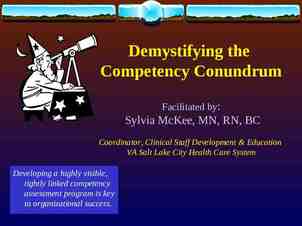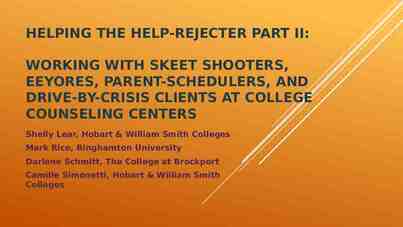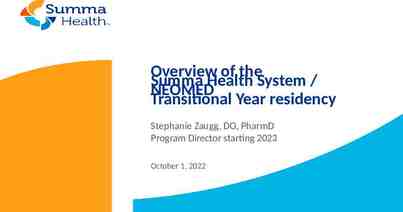COVID-19 SARS-CoV-2 Lisa Gilbert, MD, FAAFP, CTropMed 3/17/20
66 Slides9.71 MB

COVID-19 SARS-CoV-2 Lisa Gilbert, MD, FAAFP, CTropMed 3/17/20

Disease COVID-19 SARS-CoV-2 2019-nCov HCoV-19 Virus Name

7 Human Coronaviruses: 4 normal; 3 “novel” Alpha: HCoV-229E, HCoV-NL63 Beta: HCoV-HKU1, HCoV-OC43, MERS-CoV, SARS-CoV, SARS-CoV-2

Coronavirus Structure Medium-sized virus size, but largest mRNA genome Enveloped ve stranded RNA mRNA encased in nucleocapsid Lipid Bilayer – Soap works to disrupt this! Corona Crowns for Spikes Glycoprotein Spike (S) Peptomer Spikes allow it to attach to human cell receptors in upper or lower airway

Coronavirus Genome Encodes four or five structural proteins: S – spikes on the outside; mediates receptor binding M – membrane protein; assists viral assembly N – nucleocapsid protein; regulation of viral RNA synthesis, may interact with M protein during virus budding E – small envelope protein; function necessary but not fully understood HE – hemagglutinin-esterase glycoprotein in Beta coronavirus OC43 and HKU1 only; enhances uptake into mucosal cells Video and article on how coronavirus replication in cells occurs: https://www.youtube.com/watch?v Eeh054-Hx1U https://www.ncbi.nlm.nih.gov/pmc/articles/PMC4369385/

Myth 1: Donald Trump Named it Coronavirus Fake news!

Upper Respiratory Infections Normal human coronaviruses cause 5-10% of common cold/URIs, with outbreaks to 30% of common cold 229E and NL63 (alpha coronaviruses) OC43 and HKU1 (beta coronaviruses) These four predominately attach to receptors in UPPER airway (receptors: aminopeptidase N, dipeptidyl peptidase 4) Seasonality unpredictable (generally winter, but persists year round), different pattern in tropics than temperate regions URI symptoms, croupy or dry cough, rarely pneumonia (except sometimes NL63, but usually just causes croup); Mild diarrhea in infants Don’t forget other URI viruses: Rhinovirus, Influenza A/B, Adenovirus, Parainfluenza, Respiratory syncytial virus, Human metapneumovirus

“Novel” Coronaviruses Novel coronaviruses predominantly in LOWER respiratory tract SARS, MERS, SARS-CoV-2 Don’t forget other LRIs: Viral Pneumonia: Influenza (A/B), Adenovirus, Parainfluenza (Type 1-4), Respiratory syncytial virus, Human metapneumovirus, NL63 Typical bacteria CAP: Lobar – Streptococcus pneumoniae, Staphylococcus aureus, Haemophilus influenzae, Moraxella catarrhalis; Gram neg, anaerobic if aspiration Bacterial bronchitis or atypical CAP: Bordetella pertussis, Mycoplasma pneumoniae, and Chlamydia pneumoniae SARS (2002-2003): Contained. CFR 10%. 50% mortality in 60 years. MERS: Not Contained. CFR 35%. Linked to direct camel exposure. High healthcare worker infection and other nosocomial spread Aerosolization during procedures (intubation, nebs, BiPAP, suctioning)

Novel CoV attachment ACE-2 Receptors Type 2 alveolar cells - highest Bronchial epithelia Tongue buccal epithelia Upper Intestinal epithelia Myocardial cells Kidney proximal tubule cells Bladder urothelial cells SARS-CoV-2 binds to ACE-2 Receptor 10-20x more strongly than SARS-CoV Question of ADEs (Antibody Dependent Enhancement) Antibodies can create a backdoor enhancement for viral replication Implications on viral replication and vaccine development safety https://www.nature.com/articles/s41368-020-0074-x https://jvi.asm.org/content/94/5/e02015-19

Myth 2: Only Asian Men Get Coronavirus False. Asian men MAY have higher numbers of ACE2 Receptors on Type 2 Alveolar Cells, but other studies refute this. In any case, clearly everyone with ACE2 receptors is susceptible and you don’t have to be male or Asian to be infected.

SARS-Cov-2 origin Bat to a mammal (pangolin?) to human in Nov/Dec 2019 Pangolins used in Chinese medicine Probable link to seafood/exotic animal market Other plausible theory: Wuhan Level 4 Biohazard lab experimental animals sold for human consumption

Myth 3: COVID-19 was predicted in 1981 False but really eerie coincidence

SARS-Cov-2 Transmission Novel: No herd immunity, No antibodies cross-reacting Incubation 2-14 days (outlier 27 days) Symptom onset median: Day 5-6 from exposure Doubling time: 6-7 days High viral shedding occurs early in disease course, even those with mild symptoms Prolonged shedding noted (unlikely reinfection) ? Up to 23% of transmissions due to pre-symptomatic cases in Shenzen True asymptotic cases apparently only 1% per WHO? Viral load apparently still high Apparently infectious? https://cmmid.github.io/topics/covid19/control-measures/pre-symptomatic-transmission.html https://www.who.int/docs/default-source/coronaviruse/who-china-joint-mission-on-covid-19-final

SARS-Cov-2 Transmission Respiratory droplets (large - 3 ft, medium - 6 ft) Hand-to-mucus-membrane contact – sticks to skin easily! T-zone: eyes, nose, mouth vulnerable Viable for 3 days on solids (plastics, porcelain, steel); 24 hours cardboard, dependent also on temperature/humidity; 3 hours if aerosolized Airborne – likely not airborne with cough? But certainly possible with intubation, non-invasive positive pressure ventilation, high flow O2, nebulizer, suctioning ?Fecal/oral? – viral shedding present in stool and diarrhea is common https://www.medrxiv.org/content/10.1101/2020.03.09.20033217v1.full.pdf

https://www.ajicjournal.org/article/S0196-6553(16)30531-4/pdf

Seasonality and Mutation Rate We don’t know. Some CoV are seasonal in northern hemisphere; MERS is not. High disease burden and outbreaks obscure seasonality. Typical viral mutation rate; see NextStrain for real time gene sequencing: https://nextstrain.org/ Major strain development: L type (more virulent) and S type (wild type/apparent first strain). Lethality difference unclear. Normally viruses become more benign over time. However, delayed symptom onset, delayed time to death, poor access to diagnosis with isolation, contact tracing and quarantine makes deadly strains persist.

Symptoms and Disease Course Week 1: Fever (77-98%) (intermittent or persistent), Fatigue/Malaise (11-52%), Dry cough (46-82%), dyspnea (3-31%); Less common: Sputum (33%), Myalgia (15%), Headache (13%), Sore throat (14%), Diarrhea (4%), Nausea/Vomiting (5%), Nasal congestion (4%), Hemoptysis (1%) Week 2 ( day 6-9 of symptoms): 15-20% develop severe dyspnea due to viral pneumonia Hospitalization, supportive care, oxygen Week 2-3: Of hospitalized patients, 1/3 ultimately need ICU care, with up to half needing intubation (i.e. 5% of total diagnosed cases need ICU) Can rapidly decline (over 12-24 hrs) from mild hypoxia to frank ARDS Cytokine Storm, Multi-organ failure Late stage sudden cardiomyopathy/viral myocarditis, cardiac shock

Cormorbidities and Risk Conditions Age HTN Diabetes Coronary Heart Disease Hep B Cerebrovascular Disease COPD Cancer Children and pregnant women seem to do okay

https://avatorl.org/covid-19/?page ClinicalData1099

Diagnosis Travel History, Exposure and Symptoms most important Person Under Investigation Criteria No specific physical exam findings. Lungs may have rales or rhonchi. Hypoxia, even silent hypoxia, may be present, esp elders. Tachycardia and tachypnea. May present as severe asthma or COPD exacerbation.

Ancillary Studies Most Common: WBC usually normal, Lymphopenia in 80%, Mild thrombocytopenia Low Procal; Bacterial coinfection rare CRP and D-Dimer elevated proportionate to severity (marker of poor prognosis); DIC over time Increased ALT/AST to 70-100 range; Occasional increased alk phos Mild elevation of creatinine Generally normal troponin CXR (sensitivity 59%): Bilateral patchy or reticular infiltrates, perihilar infiltrates occasionally CT scan (sensitivity 86%; much better than RT-PCR!) Bilateral diffuse ground glass opacities, multifocal patchy consolidation, interstitial changes Changes prior to severe symptom onset! ECHO: Normal EF prior to late-onset sudden cardiogenic shock with dropping to EF 10% Co-infection rare but possible (5%)

Person Under Investigation (PUI) Clinicians should use their judgment. Most patients with COVID-19 have fever and/or cough or difficulty breathing. Priority may be given to: Hospitalized patients who have signs and symptoms compatible with COVID-19 in order to inform decisions related to infection control precautions. Symptomatic patients such as, older adults and individuals with chronic medical conditions and/or an immunocompromised state (e.g., diabetes, heart disease, receiving immunosuppressive medications, chronic lung disease, chronic kidney disease). Any persons including healthcare personnel, who within 14 days of symptom onset had close contact with a suspect or laboratory-confirmed COVID-19 patient, or who have a history of travel from affected geographic areas within 14 days of their symptom onset.

Person Under Investigation (PUI) Close contact is defined as— a) being within approximately 6 feet (2 meters) of a COVID-19 case for a prolonged period of time; close contact can occur while caring for, living with, visiting, or sharing a healthcare waiting area or room with a COVID-19 case – or – b) having direct contact with infectious secretions of a COVID-19 case (e.g., being coughed on) If such contact occurs while not wearing recommended personal protective equipment or PPE (e.g., gowns, gloves, NIOSH-certified disposable N95 respirator, eye protection), criteria for PUI consideration are met.

Myth 4: Respiratory Viral Panel tests for this Generally, RVP tests for: Adenovirus, Coronavirus 229E, Coronavirus HKU1, Coronavirus NL63, Coronavirus OC43, Human metapneumovirus, Human rhinovirus/enterovirus, Influenza A, subtypes 2009H1N1, H1, H3, Influenza B, Parainfluenza virus types 1, 2, 3 and 4, Respiratory Syncytial Virus. Chlamydophila pneumoniae, Mycoplasma pneumoniae, Bordetella Pertussis in some labs. It does NOT test for COVID-19 (or SARS or MERS)

Testing RT-PCR: Real-time Polymerase Chain Reaction of RNA Nasal AND Orophangeal Swabs (Collect 2 swabs) Sputum better (but more dangerous to collect?) Stool – not generally used for testing Blood or urine – virus not detected; blood could be tested for IgM, IgG later. DO get (bacterial) blood cultures for any sick patient. PCR 60-80% sensitive A single negative RT-PCR doesn't exclude COVID-19 (especially if obtained from a nasopharyngeal source or relatively early in the disease course). If RT-PCR is negative but suspicion remains, consider ongoing isolation and resampling several days later. Sensitivity from private labs may vary; no data yet. Also dependent on collection technique and timing – early test on asymptomatic may not be accurate

Testing “Kits” 1 Cold shipper w/ Refrigerate and Category B labels 2 Ice packs 2 – 3 mL Vials of viral transport media (VTM) 2 Nasopharyngeal Swabs The swabs CANNOT be of cotton or wooden shaft Only synthetic fiber swabs with plastic/aluminum shafts 1 Zip-close biohazard bag 1 95 kPa bags 2 Coronavirus Disease 2019 (COVID-19) Testing Approval Forms

Outpatient Testing Supplies 1. Triage by phone or at door to Ascension urgent care. Try to keep patients in car or outside. 2. If patient seen in clinic and needs unexpected testing, put mask on patient, wash hands, leave room. 3. Confirm with preceptor. 4. Go to lab for 2 swabs and biohazard bag. 5. Don PPE: gown, gloves, surgical mask or n95, faceshield 6. Test outside or in car (respect patient privacy). 7. Place in biohazard lab. 8. Lab will place on ice and call St Francis for STAT pick-up. 9. Patient home on isolation (see CDC guidelines). 10. Clean stethoscope, room, etc.

How to collect How to collect a nasopharyngeal swab https://www.youtube.com/watch?v DVJNWefmHjE#action share How to collect an oropharyngeal swab https://www.youtube.com/watch?v sYWYEAURUl8 Nasopharyngeal AND Oropharyngeal swabs, as separate swabs. If you don’t collect a good sample, it’s a waste of an expensive test and falsely negative! Collect sputum only if patient has productive cough (do not induce cough) Bronchoalveolar lavage is also high risk to healthcare workers. If intubated, collect tracheal aspirate. https://www.cdc.gov/urdo/downloads/SpecCollectionGuidelines.pdf

Treatment Mild/moderate symptoms (80%) Outpatient management of symptoms and isolation OTC Tylenol, cough and cold medications Avoid steroids (ICS or oral/IM) unless compelling need (COPD or Asthma Exac) Possibly avoid ACEI or Ibuprofen – data unclear! Need to protect family members! (Check CDC guidelines) At least 2 weeks isolation? Unclear when viral shedding no longer present. Unclear if we will require two negative tests and/or begin testing IgM IgG

Treatment Moderate with risks/severe/critical symptoms (15-20%) Inpatient management and supportive care Obtain Advanced Directives! Offer Chaplain Support for high risk patients. Oxygen by NC (place surgical face mask over NC to reduce aerosolization?) Anticipate rapid progression to High Flow/NRB Avoid NIV/BiPAP/Bronchoscopy if possible (increased aerosolization - risk to others!) ARDS: Controlled early intubation with airway pressure release ventilation (APRV), Paralysis, Prone positioning, Flolan. Tight connections of ETT and tubing. Avoid fluid blousing, sepsis protocol bolusing. NG tube for feeds (ARDS takes time to resolve) Daily labs: Renal, Mag, CBC with diff, DIC labs, ?LFTs, ?ABG (permissive hypercapnia if needed)

Treatment Moderate with risks/severe/critical symptoms (15-20%) BiPAP increases risk of areolation due to positive pressure (as would CPAP), AND generally patients needing BiPAP end up needing intubation. Patients do worse on BiPAP compared to HFNC/NRB. If BiPAP is the ONLY option (no vents) or is needed due to COPD, negative pressure room, air filtration, helmet interface.

Treatment Moderate with risks/severe/critical symptoms (15-20%) Antibiotics, Antifungal probably not helpful (RARE secondary infections) Procal and cultures can guide – discontinue at 48 hours Watch for HAP/VAP Steroid could: 1. increase viral levels, shedding time, lung damage - ? increase mortality 2. reduce pathological hyper-immune response (beneficial for ARDS) At least NOT high dose pulsed steroids (not Solumedrol or Hydrocortisone) Cardiac: Watch for late onset cardiomyopathy (? Viral myocarditis) with sudden EF 10% leading to cardiogenic shock Be careful if coding patients – high risk to you, low chance of survival See https://emcrit.org/ibcc/COVID19/ for more critical care management!

Experimental Treatment & Vaccine Experimental: Lopinavir/Ritonavir (Kaletra – protease inhibitors) Ribavirin Remdesivir Chloroquine/hydroxychloroquine High dose IV Vitamin C IVIG Serum antibodies of recovered patients Some Vaccine trials in Phase 1 Clinical Trials

“EVERYTHING WE DO BEFORE A PANDEMIC WILL SEEM ALARMIST. EVERYTHING WE DO AFTER WILL SEEM INADEQUATE” Michael Leavitt

Epidemiology “the branch of medicine which deals with the incidence, distribution, and possible control of diseases and other factors relating to health.” Incidence Prevalence R0 and R Case Fatality Rate Mortality Rate Prevention Containment Mitigation Infection, Prevention and Control (IPC)

Epidemiology Outbreak: “more disease than would be expected” e.g. measles outbreaks Endemic: “diseases that remain in an area naturally” Outbreaks can also occur in endemic areas Endemic diseases can be exported to other places, causing outbreaks Public Health Emergency of International Concern (PHEIC): WHO declares if it 1. constitutes a public health risk to other States 2. potentially requires a coordinated international response Emergency Committee established, unlocks funding, supplies and international response Can also increase stigma, xenophobia, economic harm (tourism) to affected country Epidemic: “regional outbreak of a disease that spreads suddenly and unexpectedly” Pandemic: “worldwide, often rapid, spread of a disease” WHO declares and has implications for activation of worldwide response, national response, World Bank funding, etc.

Basic Reproduction Number (R0) “Number of cases directly generated by one case in completely susceptible population without interventions” Effective Reproduction Number (R): “number of cases generated by one case with interventions/immunity” Some individuals immunized or already infected/recovered Nonpharmaceutical Interventions (NPI) implemented (social distancing, quarantines, isolation, treatment)

Typically cited as 2-3 but may be as high as 4.9; varies by population density and exposure patterns Probably about twice as transmissible as influenza

Case Fatality Rate Case fatality rate/risk/ratio (CFR) is the ratio of deaths from a certain disease to the total number of people diagnosed with this disease for a certain period of time Deaths/Total Cases CFR During epidemics, CFR often initially over-estimated as predominantly testing cases that are sicker in hospital (numerator); then CFR is under-estimated as increase testing of mild cases (denominator) that have not yet resolved (recovered or died) Longer time to resolution or death can make CFR look better than it really is until final outcome

Mortality Rate Mortality rate (death rate): Number of deaths in general or due to specific cause in particular population per unit of time. e.g. mortality rate of influenza per week is total deaths related to influenza Epidemic threshold: level of incidence (of disease or of death) above which an urgent response is needed; varies by disease. e.g. For influenza, if the mortality rate 7.3% that is, by definition, an epidemic. Once it drops below that, it is no longer epidemic. CFR is 0.1% but the mortality rate per week in the hospital will rise and fall.

Case Fatality rate COVID-19: 0.7 to 3.4% ( 5% in Wuhan itself during peak) Will be higher without access to healthcare, oxygen and ventilators Spanish Influenza 1918: 2.5% Mostly younger people Seasonal Influenza: 0.1-0.2%

CFR with Comorbidities: 10.5% cardiovascular disease, 7% diabetes, 6% each for chronic respiratory disease, hypertension, and cancer. Case fatality for patients who developed respiratory failure, septic shock, or multiple organ dysfunction was 49%.

Current CFR 3.9 and thoughts about range CFR 4.0 7.7 5.7 3.4 0.9 0.2 3.6 1.8 1.7 3.5 1.6 China: More recovered than active cases Iran and Italy: Overwhelmed with sicker and older patients, Less community testing; S Korea: Rapid population testing of contacts; not enough time for ve deaths/recovered Germany: Young patients diagnosed, aggressive testing But both S Korea, Germany rising slowly. US: Decreasing as more testing, but not at capacity of healthcare system

COVID-19 Stats Summary Median age affected - 50 Deaths: slightly more Males Females Kids and pregnant women seem to do okay Of total cases 80% mild/moderate 15-20% are severe/critical 2.5 - 10% require ventilator CFR 0.7% to 7.7% R0 2-5

Possible estimates by Dr Lawler at American Hospital Association meeting R0: 2.5; Doubling time 7-10 days (Influenza: 1.4) Community attack rate 30-40% 96 million (5-20%; 45 million) Cases requiring hospitalization 5% 4.8 million (810,000) Cases requiring ICU 1-2% 1.9 million (96,000) Cases requiring vents 1% 1 million CFR 0.5% US 488,000 deaths (0.1%; 50,000) “Prepare for 10X seasonal influenza burden” James Lawler, MD, MPH Director, International Programs and Innovation, Global Center for Health Security Director, Clinical and Biodefense Research, National Strategic Research Institute

Underestimation? R0: 2.5; doubling time 7-10 days Community attack rate 30-40% 96 million Cases requiring hospitalization 5% 4.8 million Cases requiring ICU 1-2% 1.9 million Cases requiring vents 1% 1 million CFR 0.5% US 488,000 deaths

Harvard Epidemiologist (Dr Lipsitch) current disease ratios R0 2.5 (R could be lowered with mitigation efforts) (Influenza has vaccine) Doubling time 6-7 days (could be extended with mitigation) Community attack rate 40-70% 131-229 million (5-20%; 45 million) Cases requiring hospitalization 15% 20- 34 million (2% or 810,000) Cases requiring ICU 5% 6.5 – 11.4 million (96,000) Cases requiring vents 2.5% 3.25 – 5.7 million CFR 1-2% 1.3 – 5 million deaths (0.1% or 50,000) https://www.cbsnews.com/news/coronavirus-infection-outbreak-worldwide-vi rus-expert-warning-today-2020-03-02/

US Surge Capacity Challenges Total hospitalizations per year: 34 million (including influenza) Hospital beds (2015): 540,668 staffed beds, of which 94,837 ICU beds (of which 4698 dedicated pediatric ICU, 22,330 neonatal ICU); Per CDC Dr Fauci, 45,000 available ICU beds. Average occupancy: 64-68% Ventilators: 62,188 full-feature mechanical ventilators; 98,738 devices other than full-feature ventilators – BiPAP; some in operating rooms too. 20-40% ICU patients typically need vent support 3.25 – 5.7 million patients need vents for COVID-19 On vent for 2-4 weeks Some would be same patients who would otherwise be hospitalized for other comorbidities. https://www.ncbi.nlm.nih.gov/pubmed/21149215 https://www.sccm.org/Communications/Critical-Care-Statistics

Kansas Capacity 11,345 licensed acute care beds of which 8766 staffed beds 1111 nursing home beds 292,953 admissions annually Predictions for COVID-19, based on Harvard and current data: Population: 2.912 million Kansans Community attack rate (40-70%): 1.164-2.038 million Hospital admission (15%): 174,600 - 305,700 Potential Deaths (1-2%): 29,120 – 58,240 (Influenza in Kansas annually only 1438) This assumes access to hospital care/healthcare workers/oxygen/vents https://www.kha-net.org/DataProductsandServices/STAT/HospitalUtilization/ http://www.kdheks.gov/flu/surveillance.htm

Management of Epidemic Prevention! Safe public health practices – vaccines, WASH (water, sanitation and hygiene) and IPC (Infection Prevention and Control) measures, Universal Precautions Surveillance systems of WHO, CDC/Ministry of Health, Public/Community Health Containment: Isolation of sick persons, Contact Tracing, Quarantine of exposed persons Mitigation: Nonpharmaceutical interventions Personal – Hand hygiene, Cover cough, Stayi away from sick persons, Avoid Face Social – Social distancing, Canceling mass gatherings/non-essential activities Environmental – Cleaning measures

We MUST #FlattenTheCurve

Quarantine vs Isolation Quarantine: Isolation: To separate and restrict movement of well persons who may have been exposed Monitor to see if they become ill To separate ill persons who have a communicable disease Restrict movement

Federal Quarantine Authority Authority to “prevent the transmission, introduction, or spread of communicable diseases” Statutory authority for HHS to govern questions of isolation and quarantine, HHS regulations give operational oversight to CDC Covers interstate and foreign quarantine rules List of diseases: Cholera, Diphtheria, Infectious Tuberculosis, Plague, Smallpox, Yellow Fever, Viral Hemorrhagic Fevers, Severe acute respiratory syndromes, Influenza caused by novel or re-emergent influenza viruses that are causing/have potential to cause a pandemic

State Quarantine Authority Most frequently utilized Can be voluntary or involuntary Laws and processes differ across states Diseases that may qualify for quarantine/isolation differ across states

Home Isolation The patient is stable enough to receive care at home. Separate bedroom (bathroom recommended), access to food and other necessities. Appropriate caregivers. The patient and other household members must have access to PPE (minimum gloves and facemask) and are capable of adhering to precautions (e.g., respiratory hygiene, cough etiquette, hand hygiene); Consider at-risk populations in home (people 65 years old, young children, pregnant women, immunocompromised, chronic heart, lung, or kidney Dx). Provide Guidance for Precautions to Implement during Home Care A healthcare professional should Provide CDC’s Interim Guidance for Preventing Coronavirus Disease 2019 (COVID-19) from Spreading to Oth ers in Homes and Communities to the patient, caregiver, and household members; and Contact their state or local health department to discuss criteria for discontinuing any such

CDC recommendations Doffing technique is even more important than donning! Info and Videos available on CDC Surgical Mask if no N95 and for regular exposure https://infectioncontrol.ucsfmedi calcenter.org/covid/donning-anddoffing-novel-coronavirus-covid-1 9-videos

Masks and NIOSH Standard Respirators Simple and Surgical masks: NOT a Filter, but stops DROPLETS Recommended for PATIENTS who are coughing and/or if YOU are in close proximity to fluids DON’T touch/adjust it! Stop pulling it down to your neck between patients! Stop putting on countertops! DON’T stick it in your white coat! (STOP WEARING WHITE COATS!) Respirators: N95 means 95% of particles/pathogens down to 0.3 microns are filters N not oil resistant R mildly oil resistant P oil resistant (for organic chemical poisoning protection) There are also N99 and N100 and P99 and P100 masks Fit is important! Air valve can help with heat/moisture PAPRs and CAPRs: Powered Air Purifying Respirators, Controlled Air Purifying Respirators

https://jamanetwork.com/journals/jama/fullarticle/2762694 https://candid.technology/n95-vs-n99-vs-p95-comparison/

Healthcare Chain of Command & Task Force Military services: Surgeon General Gerome Adams HHS: Secretary Alex Azar CDC (Center for Disease Control): Robert Redfield; Nancy Messimore NIH (National Institute of Allergy and Infectious Diseases): Anthony Fauci CMS (Center for Medicare/Medicaid Services): Seema Verma (admin) FDA (Federal Drug Administration): Stephen Hahn States have Public Health Departments that report data to CDC County Public Health Departments report to State

Planning Ahead Triage protocols, phone scripting, to direct to specific Urgent Care Masks and Hand Sanitizer at front desk Sterilizing doors, counters, rooms, handles after every visit Telemedicine for minor acute care, chronic care Cancelling non-essential surgeries, procedures, visits Well women; KBHs without need of vaccines; Sports medicine Ethical protocols for triage of resources: e.g. SOFA/APACHE 2 score D-Dimer CRP? Age Comorbities? Unclear. Mental Health – please please please reach out if you need help. We are all in this together.

Myth 5: Coronavirus comes from Beer Nope! Enjoy!

References (if not otherwise indicated) https://emcrit.org/ibcc/COVID19/ UpToDate on Coronaviruses, SARS, MERS, COVID-19 CDC: https://www.cdc.gov/coronavirus/2019-ncov/index.html WHO: https://www.who.int/health-topics/coronavirus Online courses at: https://openwho.org/ https://www.worldometers.info/coronavirus/ https://coronavirus.1point3acres.com/en?fbclid IwAR3A3clE1Ztxi-fN BgTWtVOobWuUBGFJ1S3NBPFlAaYVruBcAtzeOcqpIjQ Dr James Lawler Presentation at American Hospital Association/ National Ebola Training and Education Center

Isenheim Altarpiece commissioned in 1512 during a plague to comfort sufferers









